The most unpretentious of the large Orchid family is the Cumbria orchid, which attracts gardeners with bright large flowers with a pleasant aroma. The hybrid plant owes all these qualities to the "parents" on the basis of which it was bred - cochliode, brassia, oncidium, odontoglossum and miltonia.
Material Content:
Cumbria orchid variety description
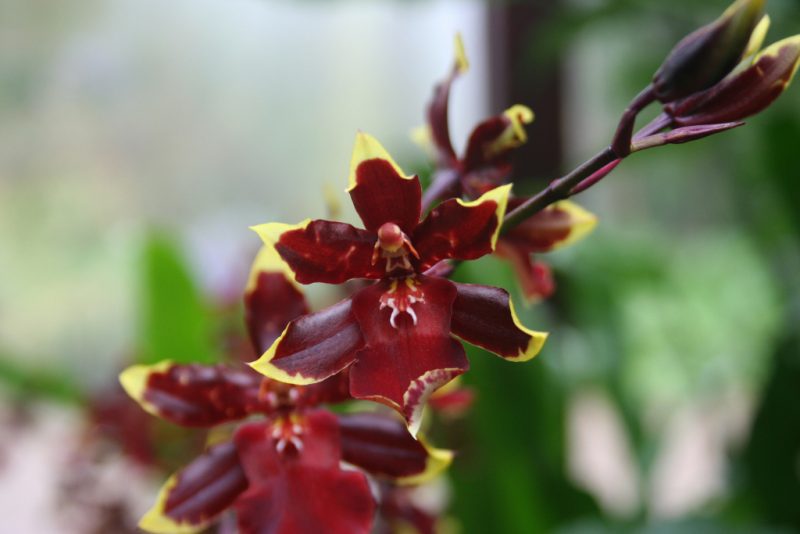
The Cumbria orchid flower is the result of the work of breeders, so it is impossible to meet it in natural conditions. In culture, a flower of a sympodial type of growth can be easily recognized by well-developed pseudobulbs reaching a length of 8 cm and long leaves (up to 60 cm). When flowering in autumn-winter time, flowers are noted that differ in large sizes (up to 10 cm in diameter) and the brightness of the color, which is red, yellow, purple, brown.
Flower transplant after purchase
Decorative flower in stores is usually purchased in blooming condition. Transplantation during flowering should not be.
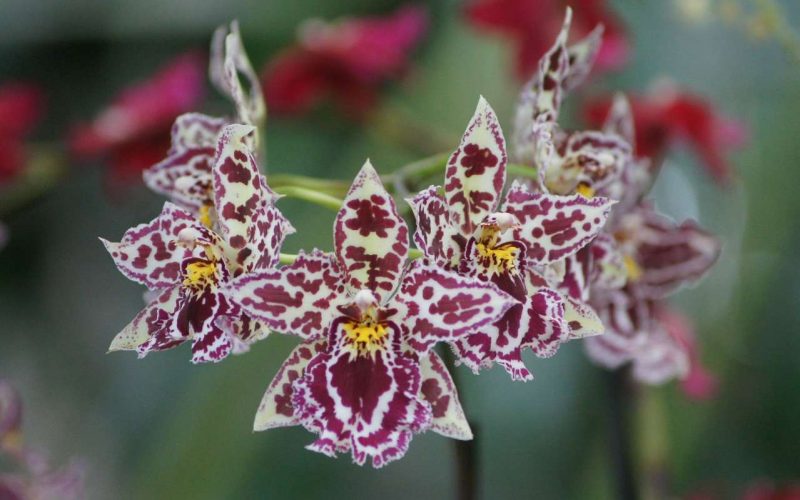
When the orchid is in a new place of residence, it is necessary to place it in isolation from other indoor plants, providing a quarantine regime that should last at least 2 weeks. If during the specified time interval the manifestations of the vital activity of harmful organisms are not fixed, then the flower can be moved to a permanent place, where it should be transplanted from the shipping container into a permanent pot with the appropriate soil mixture.
In the future, since the flower reacts quite sharply to the transplant, the procedure should be carried out no more than once every 2 to 3 years after flowering is complete, when the roots completely fill the pot or due to acidification of the substrate.
Orchid transplant scheme after purchase:
- An opaque pot of a slightly larger diameter is taken.
- Large pieces of bark or foam are placed at the bottom as drainage.
- Next, the substrate is filled with small and medium fractions of the cortex with the addition of vermiculite, which keeps the vaga for much longer.
- An orchid is established on the ground, which is fixed there, but its pseudobulbs are by no means sprinkled with a substrate.
- Over the next 7 days, the flower is not watered or fed.
Optimal conditions for growing a flower
In order for an exotic plant to bloom annually, it is necessary to create optimal conditions for the culture in the apartment environment.
It is interesting:crested chlorophytum
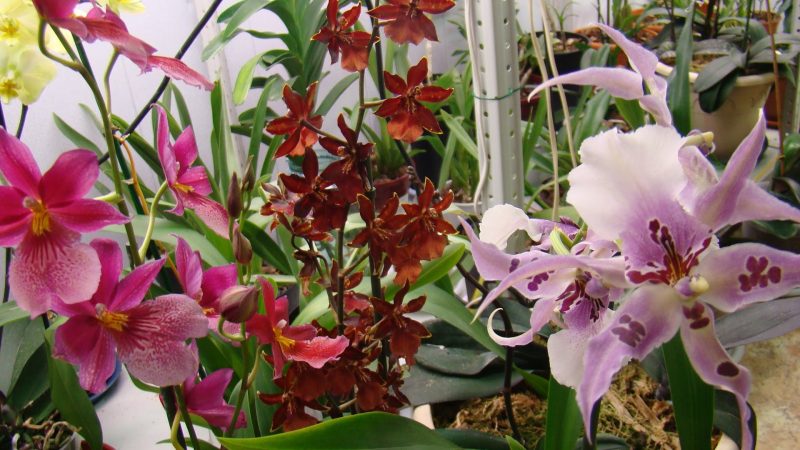
- Lighting. To avoid burns on decorative sheets, it is necessary to place the Cumbria orchid on the windowsills on the eastern or western sides of the house, where the flower will receive the greatest amount of bright, but at the same time soft light. In winter, additional illumination with phytolamps is required only with ongoing flowering.
- Temperature. Unlike other types of orchids, the hybrid plant feels comfortable at room temperatures in the range of 18 - 25 ° C and does not need sharp fluctuations in temperature values. The maximum permissible temperature minimum is 14 ° C.
- Air humidity. Since the flower was bred specifically for indoor floriculture, it is adapted to the dry air of the premises. It is recommended to slightly increase humidity during the development of peduncles by placing a container of water near the orchid.
Read also:Anthurium Andre
Home Care
To maintain the decorative effect of the Cumbria orchid, certain care measures should be taken.
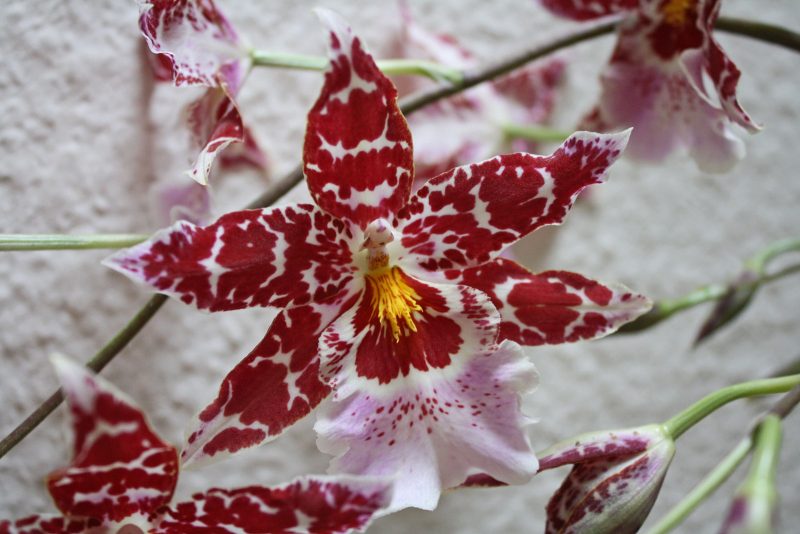
Orchid should be watered intensively only during the period of formation of pseudobulbs and after the ejection of the arrow. The rest of the time, humidification should be moderate, and during dormancy it is not required at all. Between watering, the substrate should dry completely to avoid quick acidification or caking of the bark. The optimal method involves lower humidification, in which the pot is installed in a bowl with defended water.
The Cumbria orchid is fed twice a month during the formation of pseudobulbs. After the beginning of flowering, the application of nutrients stops. Complex fertilizers in liquid form are used as a composition for top dressing. The consumption rate should be reduced by 2 times from that indicated on the package so as not to burn the roots of the orchid.
How to propagate the cumbria orchid
Orchid Cambria propagates by dividing the bush, which is carried out when transplanting an adult specimen.
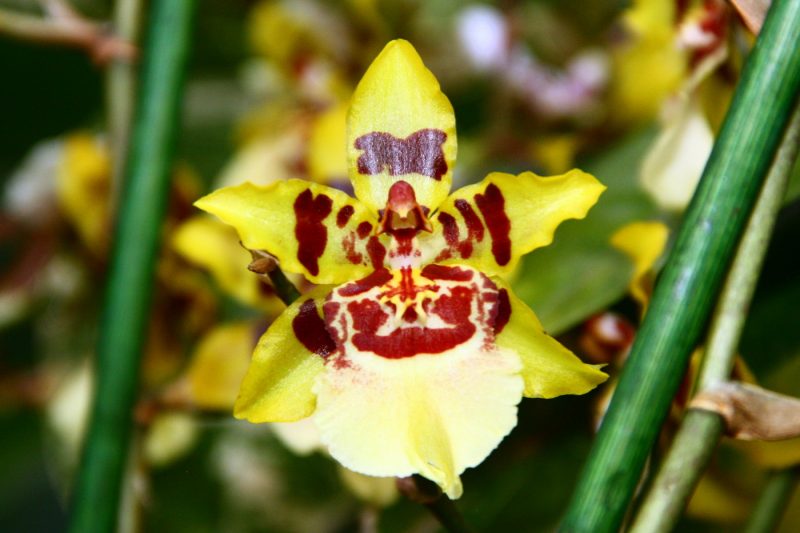
At this time, with a sharp sterile knife, pseudobulbs are separated so as not to injure the roots. Slices are treated with an antiseptic, after which the divisions are seated in separate containers.
It is interesting:orchid diseases
Protection against diseases and pests
A representative of orchids can be affected by fungal diseases caused by systematic overflows. To stop the development of the disease, it is necessary to transplant the flower into a fresh substrate, and then treat it with a fungicide.
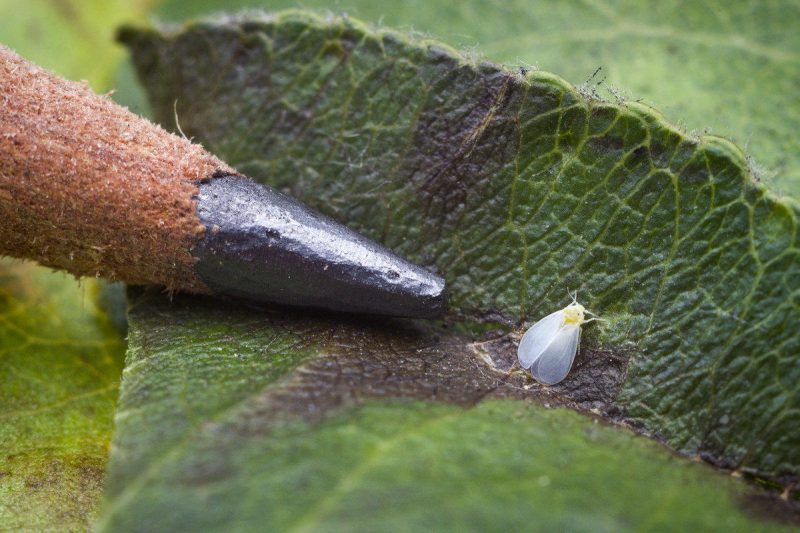
If pathogens of a bacterial nature are identified, the affected parts should be removed immediately and the exotic plant treated with the appropriate pesticide.
Of the pests, Cumbria orchid can be inhabited by worms, whiteflies, spider mites and thrips, which can be eliminated by spraying with an insecticidal solution according to the manufacturer's instructions.
Cambria orchid resuscitation
If you violate the rules of maintenance and care of orchids, they can completely rot the roots.

It is still possible to revive such a flower if:
- Remove the plant from the old tank and then remove the affected roots.
- Treat the flower with Fundazolum and fix it on a fresh substrate.
- Every week, create a misty cloud of water over an exotic plant using a finely divided spray gun.
- Once every 3 weeks add “Fundazole” to the water for spraying.
After a fairly long period of time, the root system will begin to grow.
Cumbria orchid is quite unpretentious, in comparison with other varieties. However, in order for the flower to radiate health and annually please the grower with its bright flowers, agricultural cultivation should be strictly performed.












